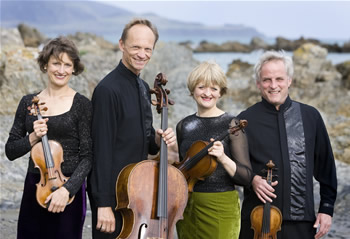Robert Parkins delivered a recital at Duke Chapel on Sunday afternoon, April 3, that was both instructive and marvelously entertaining. All of his selections were toccatas. The term is defined in The American Heritage Dictionary (3rd ed.) as “A composition, usually for the organ or another keyboard instrument, in free style with full chords and elaborate runs. [Italian, from feminine past participle of toccare, to touch, from Vulgar Latin *toccare.”]
As a musical composition, the toccata never took on a recognizable musical form, but remained a free style, often with elaborate and virtuosic technical challenges but sometimes quite meditative and mood driven. The earliest toccatas appeared in the mid- to late-16th century, written by such composers as Andrea Gabrieli, Claudio Merulo, and Girolamo Frescobaldi, and nurtured by new technical innovations in organ building. The toccata as a compositional approach reached its peak with J.S. Bach, after which its popularity and importance declined, though there are some very notable examples in the late romantic and modern eras.
Parkins built his program around the history of the toccata, beginning with renaissance selections by Luzzaschi, Frescobaldi, Sweelinck, Pachelbel and Scherer – all performed at the 1997 Brombaugh Organ in the Memorial Chapel. The exquisite flute stops on this fine organ provided flights like birds, filigree befitting the fine carvings in the chancel, and mellow modal harmonies that made a trip to Duke Chapel on this windy early spring day a most welcome retreat from the noisy and busy 21st-century world.
For the rest of the recital, Parkins moved to the 1976 Flentrop at the rear of the Chapel where he began with an extraordinary piece – Toccata IV (5o tono) by Juan Cabanilles (1644-1712) of Valencia. Brash ceremonial trumpets filled the chapel with light and life. When the piece ended I looked at my friend sitting next to me: his face, too, was beaming with a smile of delight and pleasure. A toccata by Buxtehude demonstrated why J.S. Bach was so profoundly influenced by him both as organist and as composer.
The best known and most popular of all music in the organ repertoire was played by Parkins in a free style that made it seem as though it were just coming alive from where it sleeps in the universal human subconsciousness. Every phrase of the Toccata in D Minor, S.565, seemed to flow out of the last one, moving from one triumph to the next in the only way possible – the way Bach wrote it. It was awesome.
The Toccata in D Minor, Op. 59/5, of Max Reger brought us happily into the 20th century with dynamic and dramatic writing; it received a stirring performance. Sergei Prokofiev’s Toccata, Op. 11, transcribed from his work for piano, provided a delight that must have been as much fun to perform as it was to listen to. Anton Heiller’s very difficult Tanz-Toccata, composed using the unusual octatonic scale, has phrases that reminded me of John Coltrane and Miles Davis riding on the back of some fabled winged creature.
The program ended, most appropriately, with another well-known and fantastic toccata – the one from Charles-Marie Widor’s Symphony No. 5. It was performed by Parkins with an eye more toward musicianship than virtuosity. Some organists approach this marvelous piece as though it were something like “The Flight of the Bumble Bee” and the winner is the one who plays it the fastest. Parkins played it with scholarly attention to the composer’s intention. The result was a performance that was crisp in its clarity and heroic in its sweep. Oh my, what a miracle it is that music can do this to us! I am sure that others, like me, left the chapel several inches off the ground.












